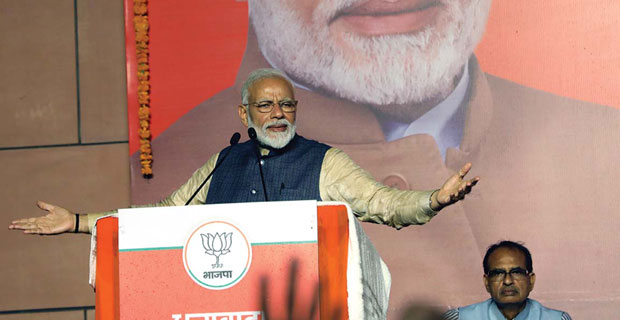Narendra Modi—the Great Unifier
After smashing through all bastions in north and middle India — from Haryana, Himachal, Uttarakhand and Delhi in the north to Bengal ...
In the West, many people feel left behind by technological change, the global economy, and growing inequality. Horrific incidents of terrorism generate apprehension and fear. Some are uneasy with societies that have become more ethnically, religiously and racially diverse. There is an increasing sense that governments and the elite ignore public concerns. In this cauldron of discontent, certain politicians are flourishing and even gaining power by portraying rights as protecting only the terrorist suspect or the asylum seeker at the expense of the safety, economic welfare, and cultural preferences of the presumed majority. They scapegoat refugees, immigrant communities, and minorities. Truth is a frequent casualty. Nativism, xenophobia, racism, and Islamophobia are on the rise. The rising tide of populism in the name of a perceived majority has paralleled a new infatuation with strongman rule that was apparent particularly prominently during the US presidential election campaign. If all that matters are the declared interests of the majority, the thinking seems to go, why not embrace the autocrat who shows no qualms about asserting his “majoritarian” vision—self-serving as it may be—and subjugating those who disagree.
Joshua Kurlantzick, a senior fellow for Southeast Asia at the Council on Foreign Relations, writing for The Washington Post, said: Populism’s continuing appeal should remind long-standing, mainstream political parties worldwide that the factors behind the populist wave are, if not universal, found in many different countries now. Furious voters may turn to populist outsiders who would shock political systems but not destroy them - or who could well demolish them. Either way, 2018 and 2019 will provide more reminders that populism is here to stay. Mukul Kesavan points out, majoritarianism is not simply Islamophobia - in India or Myanmar or anywhere else—Majoritarian politics results from the patiently constructed self-image of an aggrieved, besieged majority that believes itself to be long-suffering and refuses to suffer in silence anymore. The cultivation of this sense of injury is the necessary precondition for the lynchings, pogroms, and ethnic cleansing that invariably follow. When centrists like Angela Merkel and Emmanuel Macron were re-elected in Europe despite a strong anti-immigration rhetoric, the world breathed a sigh of relief, but with Merkel now under pressure from her own allies in the national coalition on the same prickly issue of migration, the far right is making a staunch comeback.











Comments.